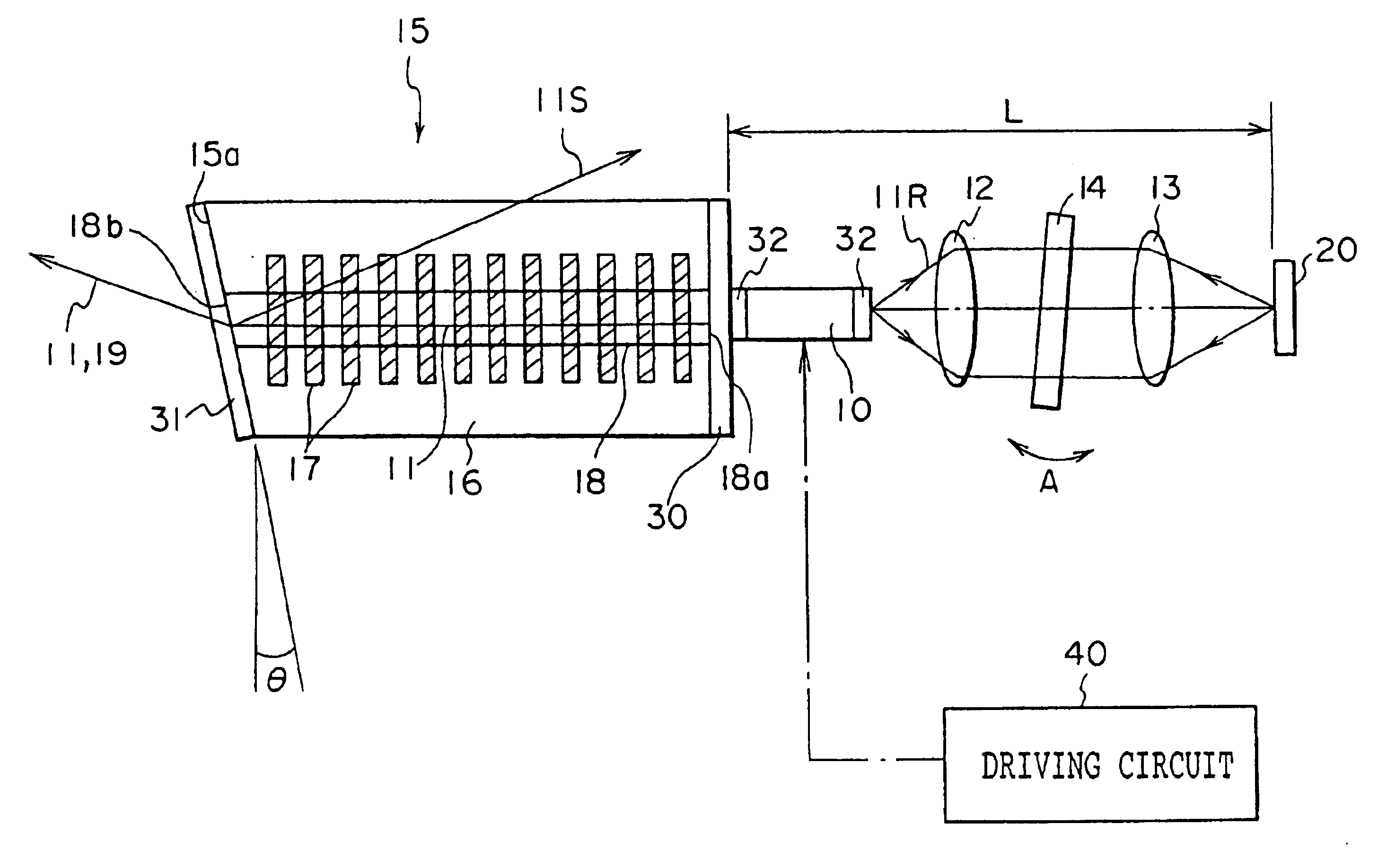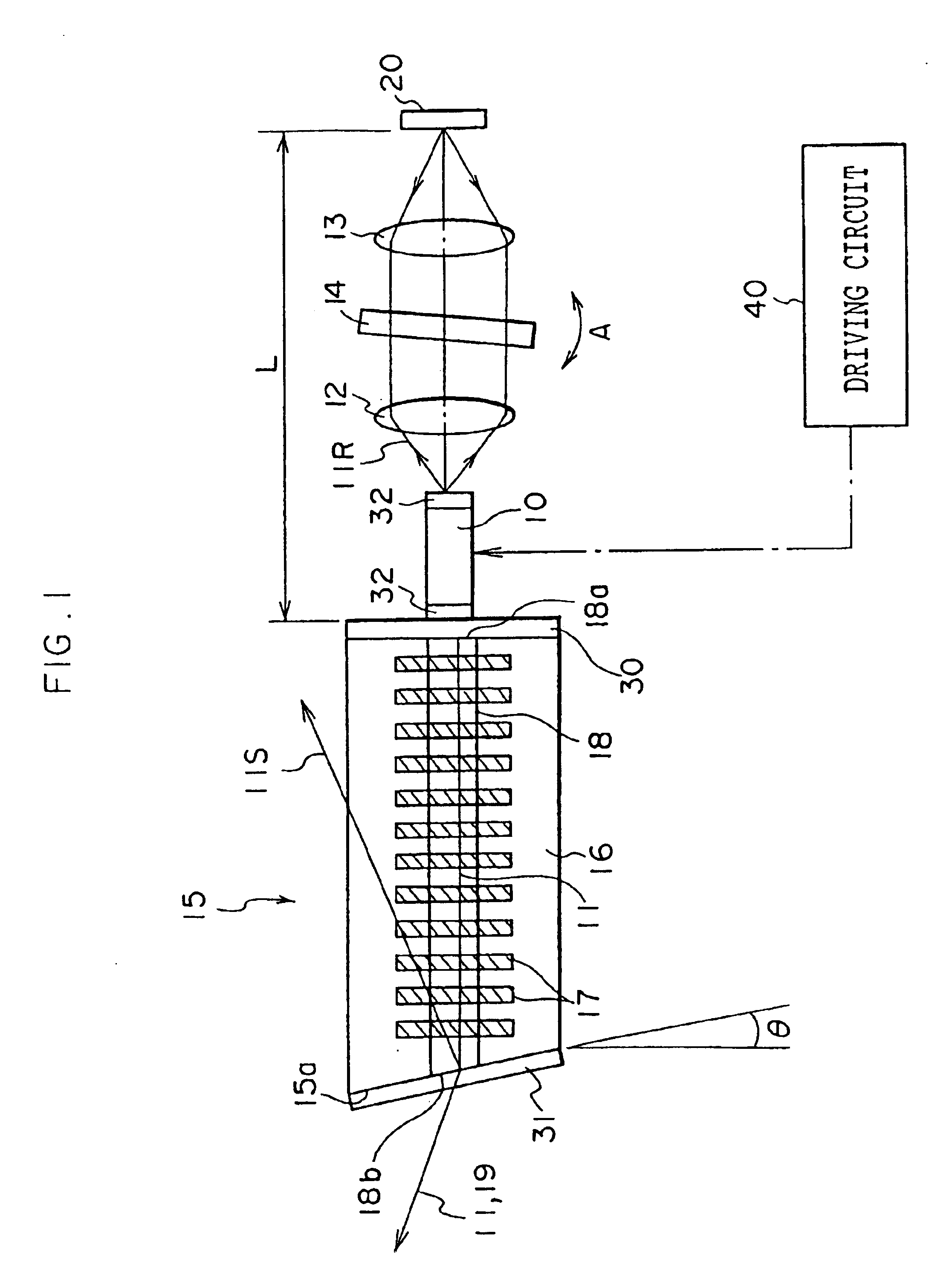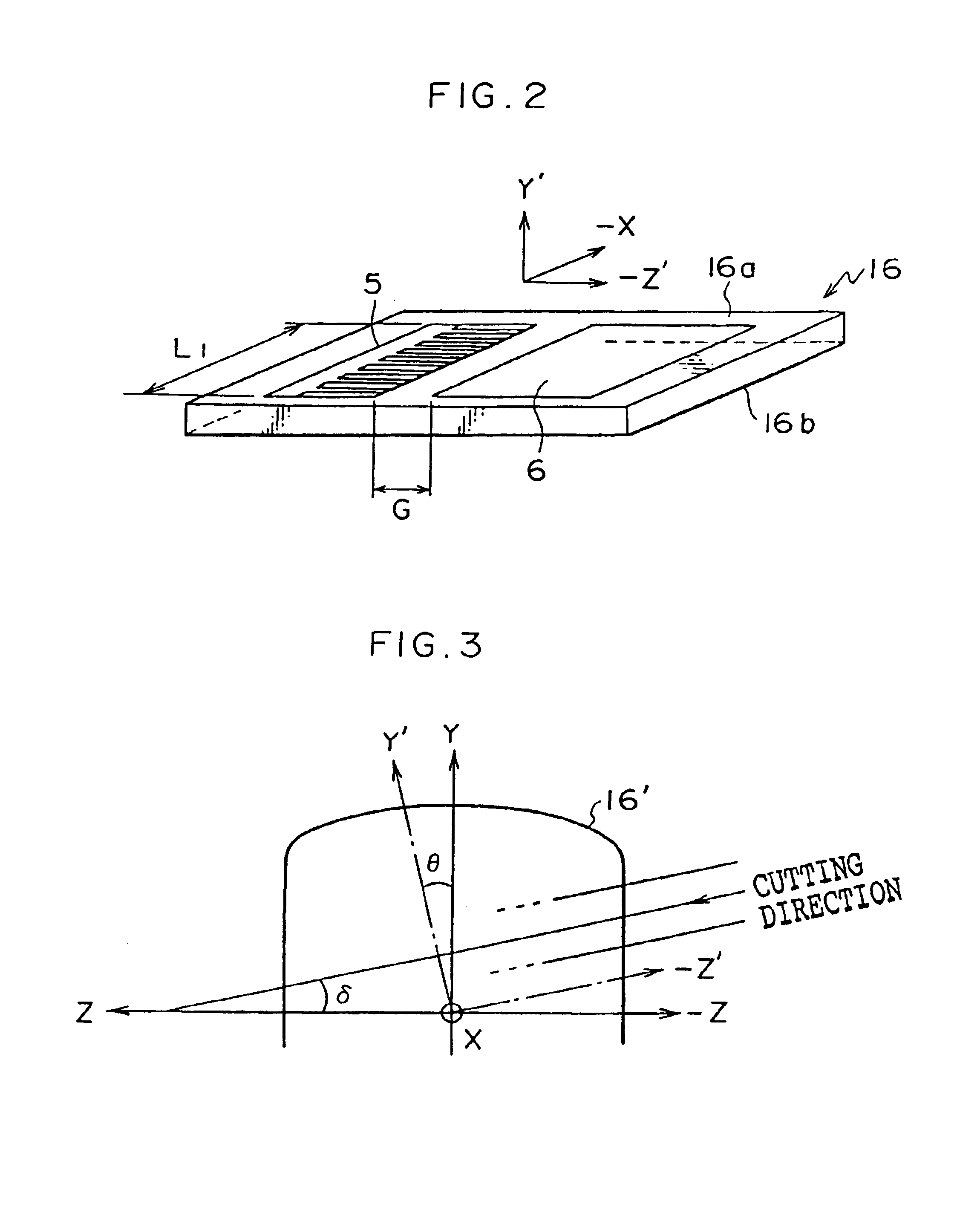Light wavelength converting system
a technology of light wavelength and conversion system, which is applied in the field of light wavelength conversion system, can solve the problems of adversely affecting the oscillation strength of semiconductor lasers, unstable oscillation strength, and non-perfect reflectance of the ar coating, so as to prevent the variation of the oscillating wavelength and maintain the linearity of the il characteristic
- Summary
- Abstract
- Description
- Claims
- Application Information
AI Technical Summary
Benefits of technology
Problems solved by technology
Method used
Image
Examples
first embodiment
FIG. 1 shows a light wavelength converting module according to a first embodiment of the present invention. As shown in this figure, this light wavelength converting module comprises a semiconductor laser 10, a collimator lens 12 which makes parallel a laser beam 11R (i.e., a backward emitting light) which is emitted in a state of a divergent light from this semiconductor laser 10, a condenser lens 13 which converges the laser beam 11R which has been made parallel, a narrow band-pass filter 14, as a wavelength selecting element, which is disposed between the collimator lens 12 and the condenser lens 13, and a mirror 20 which is disposed at a position at which the laser beam 11R is converged by the condenser lens 13.
A forward end surface of the semiconductor laser 10 (a left end surface thereof in FIG. 1) is connected directly to an end surface of a waveguide-type light wavelength converting element 15. The semiconductor laser 10 is driven by a semiconductor laser driving circuit 40 ...
second embodiment
Next, with reference to FIG. 10, a light wavelength converting module according to a second embodiment of the present invention will be explained. Further, in FIG. 10, components identical to those of FIG. 1 are denoted by the same reference numerals, and a description thereof will be omitted (the same may be said of a third embodiment).
In the second embodiment of the present invention, the AR coating 31 is applied to the element end surface 15a including the optical waveguide end surface 18a of the light wavelength converting element 15 such that the AR coating 31 is applied to an external end surface 140a of an MgO-LN crystal block 140 which is made from the same material as the substrate 16 and which has the same refractive index as the effective refractive index of the channel optical waveguide 18, namely, the end surface at the opposite side of the optical waveguide 18.
In the above-described structure, the laser beam 11 (the fundamental wave) which enters, in a state of the div...
third embodiment
With reference to FIG. 11, a light wavelength converting module according to a third embodiment of the present invention will be explained.
In the third embodiment of the present invention, a phase modulation portion 50 is formed between a wavelength converting portion (a portion on which the domain inverting portions 17 are formed) and the end surface 18b of the channel optical waveguide 18 of the light wavelength converting element 15 so that a phase of the laser beam 11 which waves-guides the optical waveguide 18 is modulated. This phase modulation portion 50 is formed by a pair of electrodes 51 and 52 which are disposed at both sides of the channel optical waveguide 18, and an alternating power source 53 which applies an alternating voltage between the pair of the electrodes 51 and 52.
A condition of a proton exchanging process and an annealing process for forming this channel optical waveguide 18 is basically the same as that in the first embodiment of the present invention and c...
PUM
| Property | Measurement | Unit |
|---|---|---|
| angle | aaaaa | aaaaa |
| angle | aaaaa | aaaaa |
| reflectance | aaaaa | aaaaa |
Abstract
Description
Claims
Application Information
 Login to View More
Login to View More - R&D
- Intellectual Property
- Life Sciences
- Materials
- Tech Scout
- Unparalleled Data Quality
- Higher Quality Content
- 60% Fewer Hallucinations
Browse by: Latest US Patents, China's latest patents, Technical Efficacy Thesaurus, Application Domain, Technology Topic, Popular Technical Reports.
© 2025 PatSnap. All rights reserved.Legal|Privacy policy|Modern Slavery Act Transparency Statement|Sitemap|About US| Contact US: help@patsnap.com



